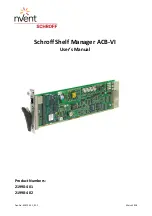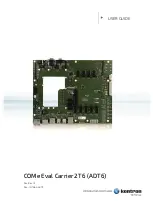
WARNING: FALL AND SUFFOCATION HAZARD
FALL HAZARD -
Infants can fall through a wide leg opening or out of carrier.
• Adjust leg openings to fit baby’s legs snugly.
• Before each use, make sure all fasteners are secure.
• Take special care when leaning or walking.
• Never bend at waist; bend at knees.
• Only use this carrier for babies between 5.5 kgs (12 lbs) and 18 kgs (40 lbs).
SUFFOCATION HAZARD -
Infants under 4 months can suffocate in this product if face is pressed
tight against your body.
• Do not strap infant too tight against your body.
• Allow room for head movement.
• Keep infant’s face free from obstructions at all times.
WARNING
• Follow instructions for use. When fastening the carrier, keep one hand on baby at all times.
• This carrier is not intended to be used for Baby Facing Out Position.
• Baby must be able to sit up on his/her own before being worn in the Back Carry Position to avoid possible back or neck
injury.
• Premature infants, infants with respiratory problems, and infants under 4 months are at greatest risk of suffocation.
• NEVER use a soft carrier when balance or mobility is impaired because of exercise, sporting activities, drowsiness, or
medical conditions. It is intended for use by adults while walking or standing only.
• Your balance may be adversely affected by your movement and that of your baby.
• DO NOT use Removable Hood if wearing baby in the Back Carry Position.
• NEVER use a soft carrier while engaging in activities such as cooking and cleaning which involve a heat source or
exposure to chemicals.
• NEVER wear a soft carrier while driving or being a passenger in a motor vehicle. DO NOT use this carrier as a child
restraint in a motor vehicle. This type of carrier will not properly restrain your baby in the event of a crash.
• NEVER leave baby unattended in this carrier.
• ALWAYS check to ensure that all buckles, snaps, straps, and adjustments are secure before each use. Make sure baby is
properly placed in the carrier, including leg placement, before each use.
• This product is subject to wear and tear over time. Check for ripped seams, torn straps or fabric and damaged fasteners
before each use.
• DO NOT use this product if deterioration or problems are detected.
• NEVER lean against baby.
• NEVER place more than one child in this carrier.
• DO NOT wear more than one carrier at a time ever.
• DO NOT use in showers, pools or any water environments.
• ALWAYS ensure that the waist belt fits securely against your body at all times without creating a gap.
Take care when bending and leaning forwards or sideways.
WARNING: Constantly monitor your child and ensure the mouth and nose are unobstructed.
WARNING: For pre-term, low birthweight babies and children with medical conditions, seek advice from a health professional
before using this product.
WARNING: Ensure your child’s chin is not resting on its chest as its breathing may be restricted which could lead to suffocation.
WARNING: To prevent hazards from falling ensure that your child is securely positioned in the sling.
The carer should be aware of the increased risk of your child falling out of the sling as it becomes more active.
Keep this sling away from children when it is not in use.
Awareness of hazards in the domestic environment e.g. heat sources, spilling of hot drinks. Only use the product for the number of
children for which the product is intended.
Helpful Hints:
• The Cuddle Up™ Ergonomic Hoodie Carrier is designed for greater comfort for both you and your child. The strap
system distributes baby's weight to make carrying more comfortable for you and baby, letting baby ride in a natural seated
position.
• Front Carry Position - Until your child is able to fully sit upright on their own, this is the correct position. In this position,
you can entertain your baby and bond with them while still having your hands free.
• How do you know if your baby is at the right height when worn in the front? - You should be able to tilt forward slightly and
kiss the top of your child’s head.
• When placing your baby in or taking them out of the carrier, sitting down will make the process easier. Until you are
familiar with the placement of baby, it is also recommended to do so over a soft surface.
• It is best to limit the use of your carrier to 10-20 minutes until you and your baby are both completely comfortable in it
together.
• Frequently look under the hood and check on baby.
En
2.

























